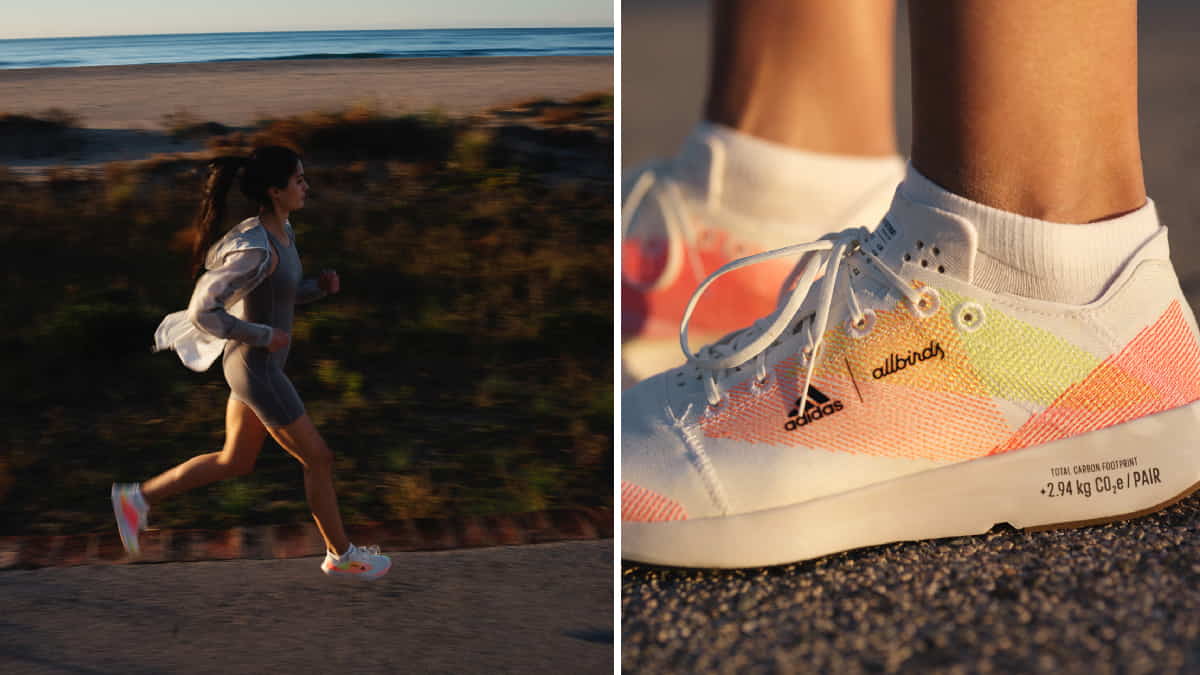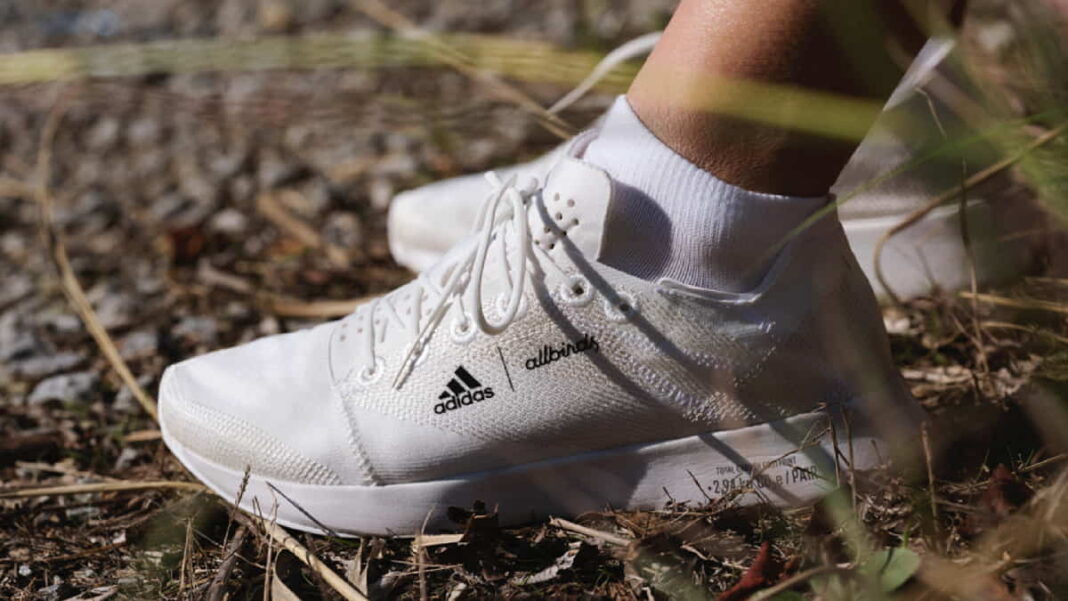adidas and Allbirds, one of the leading sportswear and footwear brands in the industry, expand their collaboration with the ADIZERO X ALLBIRDS 2.94 KG CO2E. An evolution of the FUTURECRAFT.FOOTPRINT, which launched last year, each of these low-carbon shoes equate to 2.94 kg CO2e per pair, remaining the only adidas and Allbirds performance model to go below 3 kg CO2e. This model was introduced in four new colourways, Core Black/ Bliss, Cloud White/ Carbon, Core Black/ Acid Red and Allbirds’ exclusive colourway, with each pair having a carbon footprint of just 2.94 kg CO2e and created with 63% less emissions compared to Adizero RC3 (7.86 kg CO2e). Each shoe has been coloured with no dye – a method that uses the material’s natural colour to help reduce water consumption.
adidas and Allbirds partnership brings low-carbon design alternative to running shoes
adidas Product Manager Kimia Yaraghchian said that by continuing this progressive partnership, they are hoping to pave the way for others to break new ground in footwear and clothing. Yaraghchian noted that they can take further steps towards zero-carbon waste by working together and that this project has laid the foundation for the decarbonisation goal.
Allbirds Head of Sustainability Hana Kajimura expressed that climate change presents a formidable challenge, saying; “However, the success of this project is an example of how two teams can work together to create a shoe fit for performance and the planet”. Kajimura relayed that their overarching ambition with this shoe is to inspire others to open up their development processes and cooperate with others to create the most carbon-efficient designs possible.

Less CO2, less waste
ADIZERO X ALLBIRDS 2.94 KG CO2E’s midsole is made with 17% plant-based content derived from sugarcane offering a low-carbon component, developed in part with natural materials. The sockliner uses 46% bio-based sugarcane content and the tongue + heel foam uses 17%. The outsole, designed to reduce the CO2 footprint compared to conventional versions, is made with 10% recycled rubber and is lightweight and minimalistic with a thickness of 1-1.2mm.
Removing the torsion bar completely has saved material and resulted in higher flexibility during the transition phase while on the run. On the other hand, both the upper and the outsole construction are inspired by the Tangram Principle – a design method that creates the visual impression that the upper material and the outsoles have been put together like a puzzle of individual parts. This ensures that all individual parts are in their entirety, which means as little waste in production as possible.
